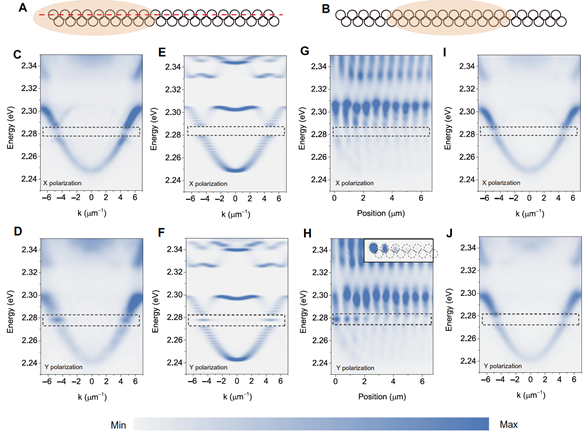BAQIS Scientist Prof. Qihua Xiong and His Team Demonstrated a Novel Optical Switching of Topological Phase
2021/06/07
Recently, the research team led by Prof. Qihua Xiong and their collaborators from Nanyang Technological University, Singapore have demonstrated the effective controllability of topological phases in a single perovskite exciton polariton lattice for the first time. This work is published in Science Advances entitled "Optical switching of topological phase in a perovskite polariton lattice".
Topological insulators represent a new class of materials that are insulating in the bulk but show topological conducting edge states, which are endowed with topological robustness against disorder. Recently, the concepts of topological insulators and phase transitions have been largely extended to photonics inspired by the findings in condensed matter physics, which is useful for the realization of high-performance novel photonic devices with defect immunity such as topological lasers and optical communication devices. However, a specific topological optical device usually exhibits a single topological phase once fabricated. To develop a broader range of applications, the controllability of topological phases in a single system is highly demanded for the development of novel optical devices.
"Our work shows how the topological phases of exciton polaritons can be effectively tuned in a single system and exciton polaritons can condense into the topological edge states", said Prof. Qihua Xiong.
Exciton polaritons are coherent superposition states by coupling the excitons with photons in semiconductors. They are half-light half-matter quasiparticles, functioning as a critical bridge to connect photonics with condensed matter physics. The introduction of optical microcavities enhances the coupling strength and increases the lifetime and density-of-states of exciton polaritons, providing the basis for studying their condensation, lasing and nonlinear properties. Exciton polaritons can be regarded as photonic states dressed by the excitons, inheriting the strong non-linearity and tunability of excitons to external electric and magnetic fields. In general, exciton polaritons with extremely low effective masses are competitive candidates for constructing controllable and nonlinear topological optical insulators.

Figure 1. Schematic and mechanism of polarization-dependent topological phase in a perovskite zigzag lattice
They introduced a zigzag periodic potential into a perovskite microcavity (Figure 1A) and simulated the one-dimensional Hamiltonian for Su-Schrieffer-Heeger (SSH) model, which is realized by etching the PMMA layer with Electron-Beam Lithography. The unique birefringent effect and giant optical spin-orbit coupling in perovskite microcavities, leads to anisotropic polaritons with distinct effective masses under different linear polarizations and directions (Figure 1C and 1D). The author cleverly aligned the zigzag potential along one of the perovskite crystal axis (Figure 1A), thus the hopping strength within and between the lattice unit cells are polarization dependent, giving rise to distinct topological phases under different polarizations (Figures 1E and 1F).

Figure 2. Experimental demonstrations of polarization-dependent phases in a perovskite zigzag lattice.
They further used a home-built angle-resolved fluorescence system to probe the exciton polariton dispersions, revealing that under X-linear polarization the lattice is in a topologically trivial phase showing a bandgap of a conventional insulator (Figure 2C), while under Y-linear polarization it is in a topologically nontrivial phase showing the characteristic of a topological insulator with a 10 meV bandgap opening (Figure 2D). The localized emission at the end site in the real-space image also confirms the existence of topological edge states (Figure 2H).
In addition, the author further demonstrated the topological robustness of the nontrivial phases and the exciton polariton lasing in the topological edge states achieved by optical pumping at room temperature.
This research is supported in part by the National Natural Science Foundation of China.
Reference: Rui Su, Sanjib Ghosh, Timothy C. H. Liew, Qihua Xiong, Optical switching of topological phase in a perovskite polariton lattice. Sci. Adv. 7, eabf8049 (2021) https://advances.sciencemag.org/content/7/21/eabf8049.full
Research Scientist (PI), Division of Quantum State of Matter, BAQIS
Professor, Physics Department, Tsinghua University
Professor Xiong's research focuses on optical spectroscopy and ultrafast spectroscopy for condensed matter. His main interests include quantum physical properties emerged from quantum confined effect and anisotropy in low-dimensional quantum materials, strong light-matter coupling in such materials, light-induced phenomenon and the resulted new functionalities in photonics and optoelectronics.
 中文
中文 Email
Email QCloud
QCloud Log in
Log in

